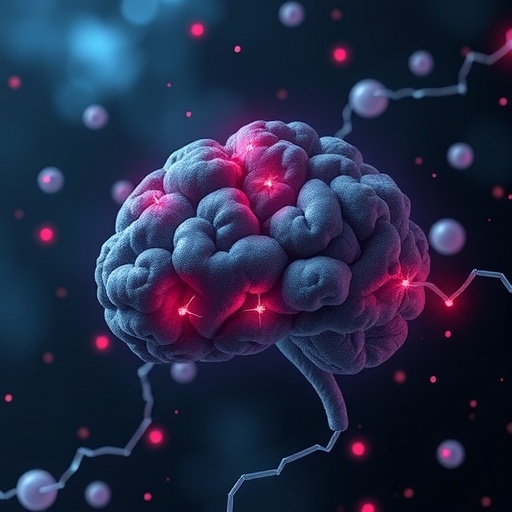In an era where the mental health of college students is increasingly under the spotlight, a groundbreaking study published in BMC Psychiatry offers fresh insights into how physical activity, sleep quality, depression, and anxiety intertwine within this vulnerable population. Researchers Yang, Li, Jin, and colleagues have employed an advanced network analysis approach to unravel the nuanced interconnectedness of these critical health factors, stepping beyond the traditional methods that mainly focused on aggregate scores rather than the intricate interplay of individual symptoms.
This study stands out for its methodological novelty. Rather than relying solely on total scores for depression or anxiety scales, the researchers dove into symptom-network analysis, which visualizes and quantifies the relationships among specific symptoms and behaviors. By doing so, they were able to identify not just whether physical activity correlates with mental health outcomes but which particular facets of physical activity and sleep disturbances act as central hubs or bridges influencing depressive and anxious states in college students.
Encompassing data from an impressive sample of 4,683 college students surveyed between September and October 2024, the researchers utilized several standardized instruments: the Physical Activity Scale-3 to capture exercise patterns, the Pittsburgh Sleep Quality Index for sleep disturbances, and self-rating scales for both depression and anxiety. The application of Spearman correlation analysis initially confirmed significant relationships, including a negative correlation of physical activity with depression and anxiety, and a positive correlation between sleep disturbances and these mental health issues.
The true innovation, however, comes from the network models constructed to explore these dynamics. Within the physical activity and sleep disturbance symptom network, “sleep quality” emerged as a core symptom, alongside “daytime dysfunction,” which exhibited the highest central influence indices. Notably, daytime dysfunction and physical activity intensity acted as key bridge symptoms connecting physical activity with sleep-related problems, underscoring their potential role in maintaining or exacerbating mental health symptoms.
Such findings are crucial because they suggest that interventions targeting these specific symptoms—improving sleep quality and reducing daytime dysfunction—could more effectively interrupt the cascading effects that lead to depression and anxiety in college students, compared to approaches that view mental health through a broad lens. This symptom-focused strategy offers a potential roadmap for designing personalized treatments or preventive programs.
Delving deeper, the flow network analysis highlighted that increased frequency of physical activity correlated notably with reductions in depression severity, exhibiting a modest correlation coefficient of -0.14. Conversely, daytime dysfunction and sleep disruptions showed positive correlations with depression and anxiety, affirming their detrimental roles in emotional well-being. These results corroborate the existing literature that emphasizes the protective role of regular physical activity against mental health decline while adding precision about the symptoms most critical to target.
The implications of these outcomes extend beyond academic curiosity. College students often experience irregular sleep schedules and fluctuating activity levels due to academic pressures, social engagements, and lifestyle changes. Understanding that specific symptoms like daytime dysfunction—characterized by impaired concentration and fatigue during waking hours—may serve as pivotal points in mental health deterioration invites universities and health professionals to tailor wellness programs accordingly.
Moreover, the bidirectional relationships suggested in the network imply that improving physical activity not only mitigates depressive and anxious symptoms but also enhances sleep quality, potentially creating a positive feedback loop that bolsters overall resilience. Conversely, unchecked sleep disturbances could exacerbate mood disorders and reduce motivation for physical activity, forming a vicious cycle.
This study also challenges the research community to embrace symptom-level network analysis as a standard practice in mental health investigations. By embracing these analytical techniques, mental health professionals may move toward precision psychiatry, where interventions are designed to disrupt specific symptom networks, promising more effective and enduring outcomes.
From a public health standpoint, the research underscores the value of integrating physical activity promotion into mental health initiatives for young adults. The identification of bridge symptoms—those that serve as connectors across symptom clusters—provides tangible intervention targets that can be addressed through behavioral therapies, digital health tools, or campus policies.
Future research could expand on these findings by examining whether similar network structures exist in diverse populations, including different age groups or cultural contexts. Longitudinal studies are also warranted to assess how symptom networks evolve over time and in response to interventions, potentially refining strategies to sustain mental health improvements.
In an age dominated by mental health crises exacerbated by global challenges like the COVID-19 pandemic, this study offers a beacon showing how granular analysis of symptom interrelationships can illuminate new pathways to prevention and care. College campuses, with their unique environmental stressors, stand to benefit immensely from such evidence-based approaches.
In sum, the analytical prowess demonstrated by Yang et al. redefines how we comprehend the relationships between physical activity, sleep disturbances, depression, and anxiety in college students. It invites a paradigm shift toward understanding and managing mental health not as monolithic conditions, but as dynamic, interwoven symptom networks amenable to targeted, effective intervention strategies.
Subject of Research: Network interrelationships among physical activity, sleep disturbances, depression, and anxiety in college students.
Article Title: Network analysis of interrelationships among physical activity, sleep disturbances, depression, and anxiety in college students
Article References: Yang, J., Li, W., Jin, X. et al. Network analysis of interrelationships among physical activity, sleep disturbances, depression, and anxiety in college students. BMC Psychiatry 25, 904 (2025). https://doi.org/10.1186/s12888-025-07376-0
Image Credits: AI Generated




